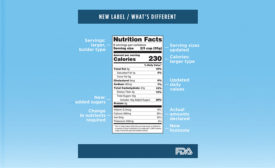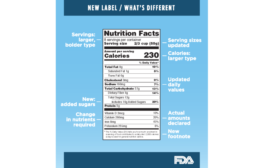Home » Keywords: » nutrition labeling
Items Tagged with 'nutrition labeling'
ARTICLES
The decision will help keep grocery stores and food banks stocked, said IDFA President and CEO Michael Dykes.
Read More
Clean-label trend expands beyond ingredients
Transparency and consumer education are musts
May 3, 2019
Address ‘added sugars’ labeling concerns
Innovative dairy ingredients can help food and beverage processors achieve sugar reduction.
April 11, 2019
FDA proposes to extend compliance dates for Nutrition Facts label final rules
The move is in response to concerns companies and trade associations have shared with the agency regarding the time needed for implementation.
October 5, 2017
Strategies for managing ‘added sugars’
Formulation options include use of high-intensity sweeteners. Processing techniques include using pre-aeration of the mix to produce smaller, more stable air bubbles.
May 8, 2017
Just the facts
What dairy processors must know about FDA's new Nutrition Facts label
Dairies and other food makers must comply with the new FDA Nutrition Facts label rules by July 26, 2018. Get started now.
July 19, 2016
Get our new eMagazine delivered to your inbox every month.
Stay in the know on the latest dairy industry trends.
SUBSCRIBE TODAYCopyright ©2024. All Rights Reserved BNP Media.
Design, CMS, Hosting & Web Development :: ePublishing









